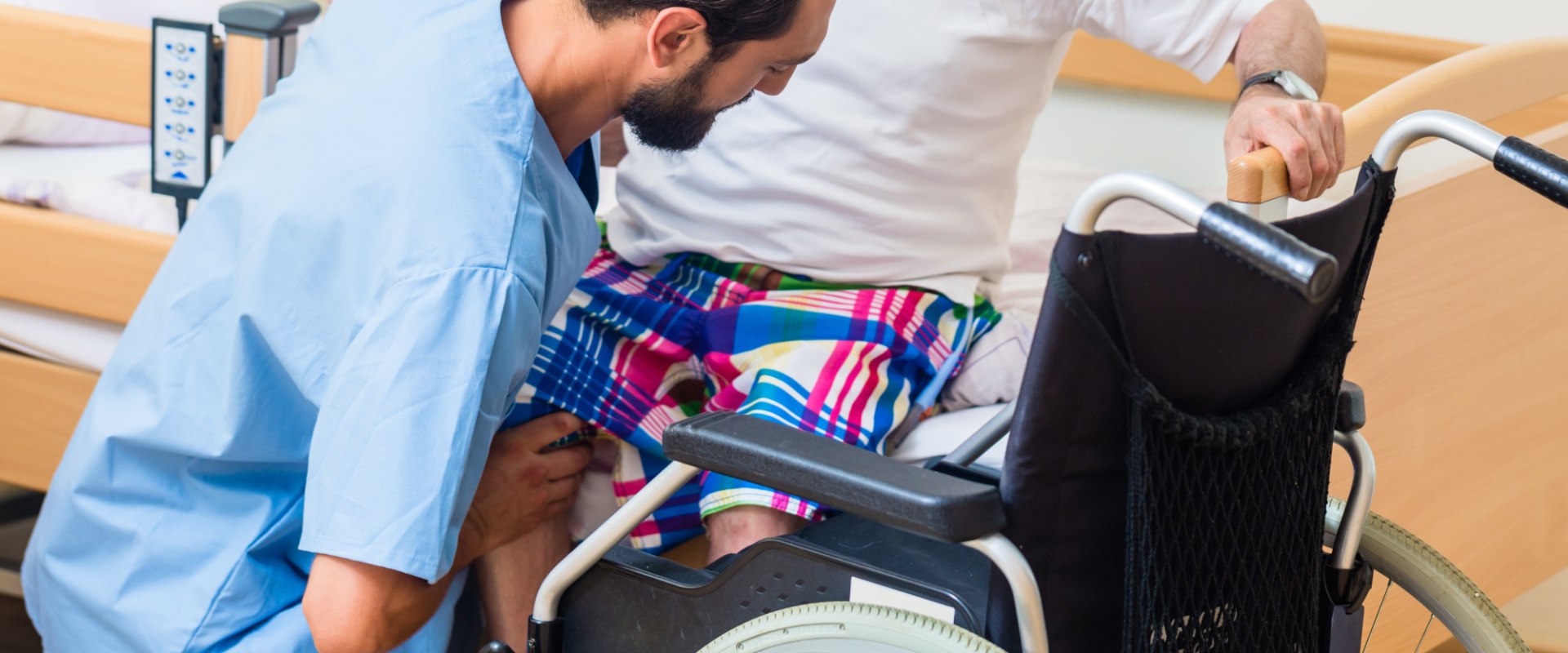Hospice offers four levels of care, as defined by Medicare, to meet the diverse needs of patients and their families. The four levels of hospice include. The four levels of hospice include routine home care, continuous home care, general hospital care, and temporary care. Routine home care is the most common hospice service and typically includes case managers of registered nurses, LPNs, home nursing aides, social workers, community educators, spiritual care specialists, volunteers, and more.
As the name implies, routine home care is provided in the patient's home, whether it is a traditional residence or a facility in the field of health care services for the elderly, such as a nursing home, personal care, assisted living center or retirement community. Continuous home care is much more intensive than routine home care and involves ongoing care to manage the patient's acute symptoms. Patients who need this type of hospice care usually receive 24-hour care from hospice caregivers. General hospital care is usually to treat symptoms that cannot be controlled through home care.
General inpatient hospice care is usually short-term and can be provided in a number of different locations. Sometimes, it is provided in the hospice unit of a hospital. Can also be provided in a long-term care residence. For many patients and their families, the quietest environment for this type of hospice care is in a separate hospice facility.
Temporary care is short-term hospital care intended to benefit family caregivers and patients. Caring for a loved one with a critical or terminal illness can be difficult for everyone involved, and sometimes the patient is admitted to a hospice unit for a short period when they need the kind of care that cannot be provided at home or when the family caregiver needs a break. Foster care usually has a limit, in terms of number of days, and can usually only be provided on occasion. It is for hospice patients who qualify, according to Medicare guidelines.
Not all inpatient hospice services offer respite care, but they can be a relief for patients who sometimes require more intensive care. For most patients, hospice care is covered through the medical hospice benefit or other insurance plan. Medicare defines four different levels of hospice care. The four levels of hospice defined by Medicare are routine home care, continuous home care, general hospital care, and temporary care.
A hospice patient may experience all four or just one, depending on their needs and desires. Routine home care is a variety of services you get where you live. This care is for times when you are not in a medical crisis. Continuous home care is for times of crisis when a higher level of nursing care is needed.
These services can make it easier for you to stay home, even when your symptoms get worse. Ongoing home care means you need a nurse for at least eight hours in a 24-hour period. You may also get help from other hospice team members at the same time, but at least half of the care must be provided by a nurse. Foster care services are more for the family than for the person in hospice.
If someone doesn't qualify for ongoing or inpatient care, but the family is having a hard time, foster care may be an option. There is a five-day limit for foster care. After that period, the patient returns home. There are four main types of hospice care, and a patient may experience one or all of them during the time they spend with hospice.
Each level of care is designed to meet the unique needs of the patient. As the patient's condition worsens, it may progress to other levels of palliative care. For example, a terminally ill patient may begin hospice care with routine home care and transition to continuous home care and general hospital care as symptoms become more severe. Routine home care for hospice patients is covered by Medicare Part A and B.
It is for patients who have tolerable symptoms that do not require 24-hour treatment. Services that a patient may receive in routine home care include nursing, occupational therapy, physical therapy, pathology services, medical equipment, and medical supplies for use at home. Routine home care allows hospice patients to receive the support and care they need without leaving home. This allows them to keep their daily routine as similar as possible while receiving hospice care.
While each provider may have a different process, ongoing home care usually involves hospice workers taking shifts to ensure that the patient and family have the support they need 24 hours a day while there are acute symptoms. The palliative care physician may also remain in constant communication with the patient's primary care physician. Symptoms that often lead to the need for treatment in an inpatient facility are similar to acute symptoms that require ongoing home care, although they may worsen and require the need for more complex medical equipment and thorough supervision by the hospice team. Some patients may enter hospital care out of necessity because of their symptoms, but others may choose general hospital care to ensure the fastest and most reliable treatment possible.
Temporary care is provided when the primary caregiver is mentally or physically exhausted and needs a break or will be temporarily unavailable (for example,. With respite care, the patient is admitted to the inpatient center and hospice staff meet their physical and emotional needs. Respite care is limited to five days at a time. A caregiver may need respite care if they need to take several days off to ensure they are in a mental and physical state to properly care for the patient.
They may also need respite care if they have a wedding, graduation, or other event they plan to attend. This ensures that the patient gets the care they need while also giving the caregiver the support and rest they want. In general, patients who face tolerable symptoms most days are eligible for hospice care at home, while those who have more severe symptoms may require general hospital care. Of course, the level of hospice care may change periodically, for example, if the caregiver needs a break from routine home care and decides to use foster care for several days.
When a doctor certifies that a person is not expected to live longer than six months, Medicare offers hospice care. Hospice patients receive complete medical care, but not curative, which means that the care they receive is intended to provide comfort and control of symptoms, not a cure. Starting hospice early can provide months of meaningful care and quality time with your loved ones. The interdisciplinary hospice group establishes the POC together with the attending physician (if any), the patient or representative and the primary caregiver.
In addition, hospice recipients are more likely to control pain and less likely to be tested or given medicines they don't need, compared to people who don't use hospice care. Hospice care brings together a team of people with special abilities, including nurses, doctors, social workers, spiritual counselors, and trained volunteers. Provide palliative care for patients and at home, including respite care, with friendly, experienced support along the way. In general, Medicare pays hospice agencies a daily rate for each day a patient enrolls in the hospice benefit.
What you may not know is that there are usually four types of palliative care, two of which take place in the home. Hospice providers who are Medicare certified must offer four levels of hospice care, which are defined by the Centers for Medicare Medicaid Services% 26. Hospice is provided to a terminally ill person whose doctor believes he or she has six months to live or less if the illness runs its natural course. . .












